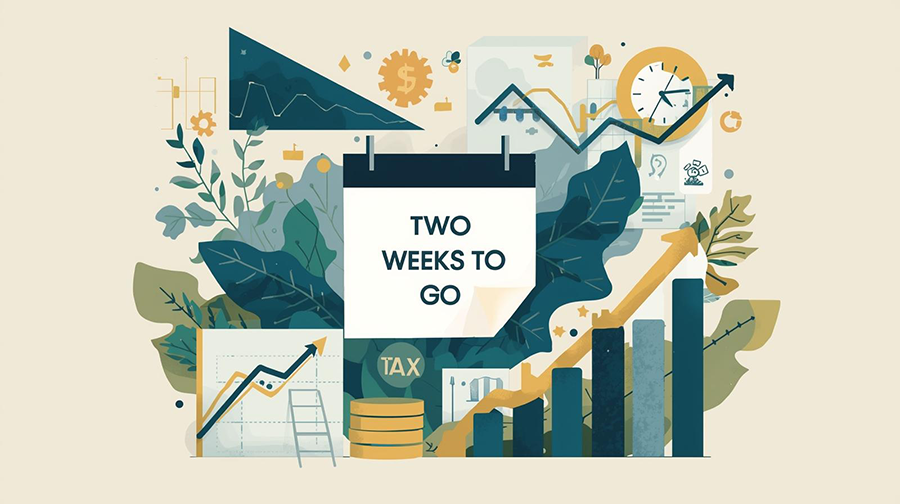
Long-term Strategies for Creating Financial Stability and Preparing for Future Uncertainties
Building financial resilience is not just prudent—it's essential in an era of economic volatility. From unexpected job losses to market downturns, life's uncertainties demand proactive planning and thoughtful financial management. Here's a roadmap to help you create long-term financial stability while preparing for the unpredictable.
1. Prioritize Emergency Savings
An emergency fund is your first line of defense against financial setbacks. Aim to save three to six months' living expenses in a liquid, accessible account. This cushion allows you to handle unexpected expenses, such as medical bills or home repairs, without derailing your long-term financial plans.
Source: Financial Industry Regulatory Authority (FINRA), "Building an Emergency Fund"
2. Diversify Your Income Sources
Relying solely on one source of income can leave you vulnerable during economic shifts. Explore ways to create additional revenue streams, such as freelance work, investments, or rental income. Diversifying your income mitigates risk and provides opportunities to build wealth over time.
Source: U.S. Bureau of Labor Statistics, "Supplemental Income Trends in Households"
3. Invest for the Long Term
Investing is a cornerstone of financial resilience. To balance risk and reward, allocate your portfolio across a mix of asset classes—stocks, bonds, real estate, and alternative investments—and consider index funds or ETFs for broad market exposure. Adopt a long-term perspective to weather market fluctuations.
Source: Securities and Exchange Commission (SEC), "Introduction to Investing"
4. Manage Debt Wisely
High-interest debt is a significant obstacle to financial stability. Prioritize paying off credit cards and personal loans while avoiding new debt whenever possible. For more extensive obligations, such as mortgages or student loans, explore refinancing options to reduce interest rates and monthly payments.
Source: Consumer Financial Protection Bureau (CFPB), "Debt Management Resources"
5. Insure Against Risk
Insurance serves as a critical safety net in the face of unexpected events. Ensure you have adequate coverage for health, life, home, and disability insurance. Consider additional policies, such as umbrella insurance, if your financial situation warrants extra protection.
Source: National Association of Insurance Commissioners (NAIC), "Insurance Basics"
6. Develop a Sustainable Budget
A budget is your financial roadmap, allowing you to allocate resources effectively while avoiding overspending. Use the 50/30/20 rule: allocate 50% of your income to necessities, 30% to discretionary spending, and 20% to savings and debt repayment. Review and adjust your budget regularly to reflect changing circumstances.
Source: U.S. Financial Literacy and Education Commission, "Budgeting Guidelines"
7. Plan for Retirement Early
The earlier you begin saving for retirement, the greater your financial security will be in later years. Take full advantage of employer-sponsored retirement plans, such as 401(k)s, and contribute enough to receive any matching funds. Additionally, explore IRAs and other tax-advantaged accounts to diversify your retirement savings.
Source: Employee Benefit Research Institute (EBRI), "Retirement Savings Trends"
8. Stay Educated and Adaptable
The financial landscape is constantly evolving. Stay informed about market trends, economic policies, and investment opportunities. Regularly reassess your financial goals and strategies to adapt to new challenges and opportunities.
Source: Securities and Exchange Commission (SEC), "Investor Alerts and Bulletins"
9. Build a Strong Financial Network
Surround yourself with trusted advisors who can guide your financial decisions, including financial planners, tax professionals, and attorneys. A knowledgeable network provides the expertise you need to make informed choices and avoid costly mistakes.
Source: Certified Financial Planner Board of Standards (CFP Board), "Choosing a Financial Advisor"
10. Cultivate a Resilient Mindset
Financial resilience is as much about mindset as it is about money. Practice patience, discipline, and flexibility. Understand that setbacks are inevitable but manageable with a well-thought-out plan.
Source: American Psychological Association, "Building Resilience"
Conclusion
Financial resilience is a journey, not a destination. By implementing these strategies, you can create a stable foundation for confidently navigating life's uncertainties. While you can't control every economic or personal challenge, you can control how you prepare for and respond to them. Start building your financial resilience today to secure a brighter, more stable tomorrow.
Silence today and pave the way for a more secure tomorrow.
Disclaimer
This article is for informational purposes only and does not constitute financial, legal, or investment advice. The strategies and recommendations discussed are not guarantees of specific outcomes. Readers should consult with licensed financial advisors, legal professionals, or tax experts to evaluate their circumstances before making financial decisions. Past performance is not indicative of future results. Investments involve risks, including the potential loss of principal. The content complies with SEC regulations, and any mention of specific investment vehicles or financial strategies is educational in nature.
Sources:
Financial Industry Regulatory Authority (FINRA), "Building an Emergency Fund": https://www.finra.org/investors/building-emergency-fund
U.S. Bureau of Labor Statistics, "Supplemental Income Trends in Households": https://www.bls.gov
Securities and Exchange Commission (SEC), "Introduction to Investing": https://www.sec.gov/investor/alerts-and-bulletins/investor-introduction-investing
Consumer Financial Protection Bureau (CFPB), "Debt Management Resources": https://www.consumerfinance.gov/consumer-tools/debt-collection/
National Association of Insurance Commissioners (NAIC), "Insurance Basics": https://www.naic.org/consumer_insurance_basics.htm
U.S. Financial Literacy and Education Commission, "Budgeting Guidelines": https://www.mymoney.gov/tools
Employee Benefit Research Institute (EBRI), "Retirement Savings Trends": https://www.ebri.org
Securities and Exchange Commission (SEC), "Investor Alerts and Bulletins": https://www.sec.gov/investor-alerts-and-bulletins
Certified Financial Planner Board of Standards (CFP Board), "Choosing a Financial Advisor": https://www.cfp.net/your-finances/choosing-a-financial-planner
American Psychological Association, "Building Resilience": https://www.apa.org/topics/resilience












